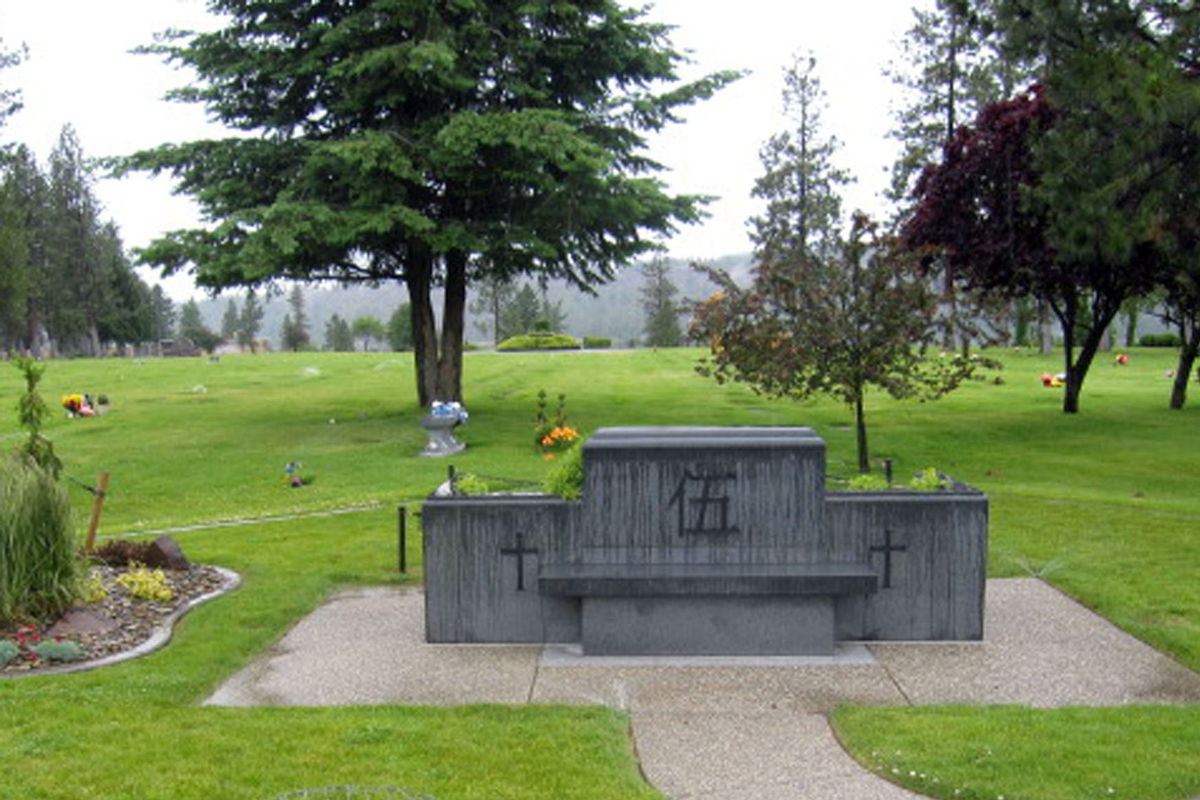Landmarks: Chinese tradition places great value on funeral customs

When Chinese contract laborers came to the Inland Northwest in the late 1800s to lay track between Spokane and Rathdrum for the Northern Pacific Railroad, they brought with them their religious and cultural traditions – but not their families.
Eddie Eng, 82, retired owner of the Cathay Inn in Spokane and himself a native of China, said the men were not allowed to bring their wives and families into the country, and had every intention of returning home. Being so far away, they formed various associations centered around social and cultural needs and, of course, a common language. The Chinese associations that thrived in the area also had a significant focus on burial customs, as these were considered important, Eng said.
There was the Hip Sing Association, which purchased burial plots for families that couldn’t afford them and later the Spokane Chinese Charitable Organization, which began as a member association that sent a person’s possessions back to family in China when they died and put flowers on local graves. Many of these associations were underwritten by local Chinese restaurant owners. Tom Liu, owner of Peking North and most recent president of the Spokane Chinese Charitable Organization, said his group is largely inactive now, due largely to a drop-off in financial contributions, and also because many of its members are now, like him, elderly. The group has purchased land at Greenwood Memorial Terrace for burials of those who cannot afford their own plots.
In addition, with funds remaining in the treasury, Liu, 72, also a native of China, purchases flowers for about 200 graves at Memorial Day.
In the early years, burial in Spokane of Chinese workers was temporary. In her 1993 thesis “The Final Journey Home: Chinese Burial Practices in Spokane,” Judy Nelson Knaack, who earned masters of arts in history from Eastern Washington University and who works in the reference section of the Spokane Public Library, explained how burial ceremonies are connected with the Confusian principle of ancestor worship or filial piety. Parents were honored in many ways, including specific and elaborate rites of burial. Ideally, a person should be buried in his homeland near his ancestors.
But return of remains was not always financially possible, although the Chinese associations did facilitate many such reburials. Because custom required that bodies be buried beyond the community where the people lived and on hills overlooking water and on land not used for farming, two local sites were often used in the late 1800s and early 1900s in Spokane – in Browne’s Addition at the top of the bluff at the end of West Pacific Avenue and on the Northern Pacific right-of-way between Ash and Oak streets. Most of those buried there were removed and returned to China when money was available. The exhumed bodies were painstakingly prepared for the journey home, according to custom.
There are no real records of how many Chinese were buried and then disinterred for return to China. When a mansion was built at the Browne’s Addition burial site, one body was found but never identified, and later when a condominium was erected there, three other bodies were located, all identified as Native American.
Some of the Chinese immigrants were also temporarily interred at Fairmount Memorial Park (on a hillside overlooking the Spokane River) and along a bank where a stream flowed at Greenwood Memorial Terrace. There are some cemetery records showing that many of those buried were later shipped elsewhere, though final destinations weren’t noted.
One very public funeral took place in March 1926, that of Hoy Chong Gar, a Chinese doctor who died at 56, with appendicitis listed as the cause of death. A newspaper article at the time called it one of the largest funerals in the city’s history, attended by more than 1,000 people. The funeral procession was so long that when the hearse reached Main Avenue and Monroe Street downtown the last car was just passing Mallon Avenue and Monroe. Goblets of wine were poured on carpeting leading to the vault at Fairmount and the appropriate foods were left at the site. Although an American citizen and 24-year resident of Spokane, it had been Gar’s wish to be returned to reside with his ancestors.
A man named Barr Yep, who later emigrated from China to Spokane, was present when Hoy Gar’s remains returned to China. In one account, he spoke of an elaborate ceremony attended by 400 people. In 1936, the year Japan invaded China, which was followed by the outbreak of World War II, the reburial custom was stopped.
Eng said more people are following Western cultural traditions now, even among those born in China, and certainly among younger American-born generations. For himself, he embraces both. In preparation, an elegant Eng family plot has been created at Fairmount and a monument already erected.
The respect and tradition of Chinese burial custom remains for Eng – right at home in Spokane.